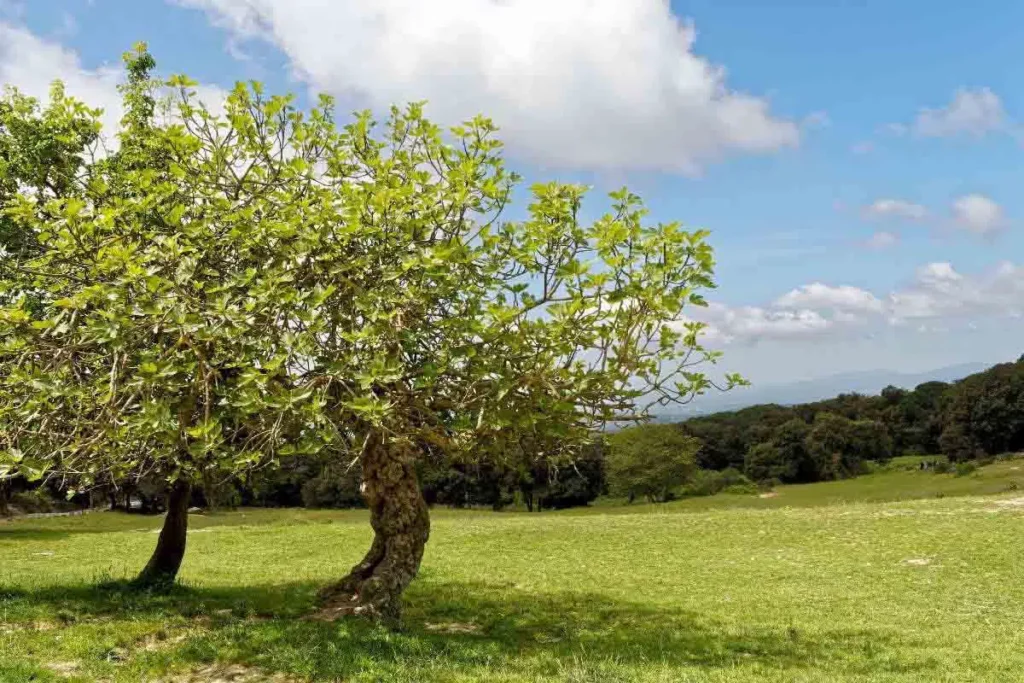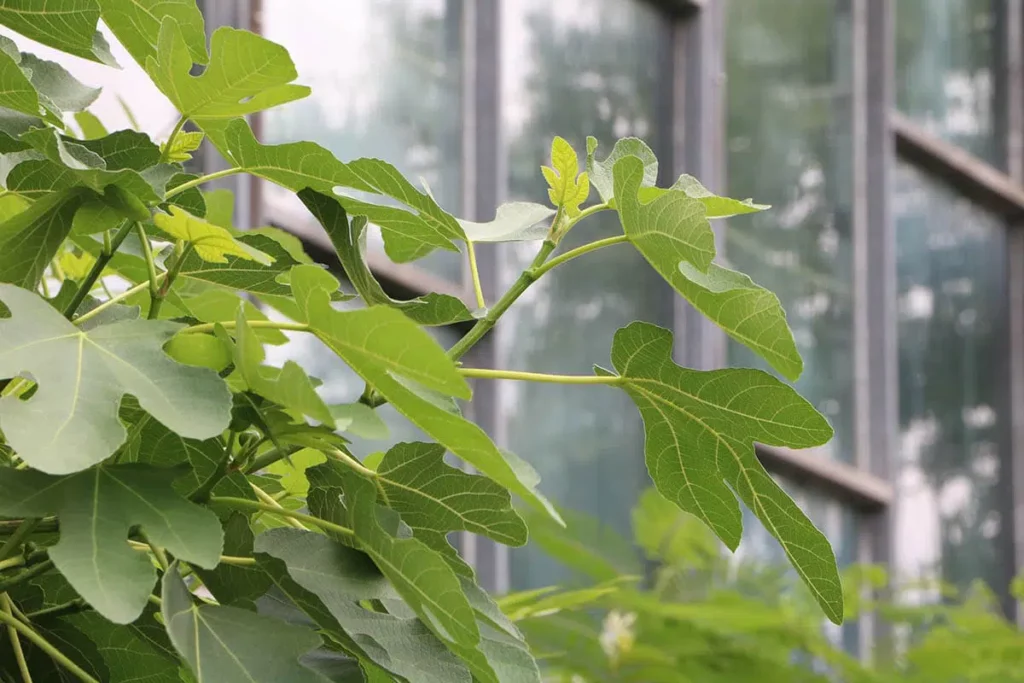The fig tree (Ficus carica) is pruned mainly in late winter. Pruning in the summer is also useful in certain cases. We tell you how and when to do summer pruning on the fig tree.
- Summer pruning for improved overwintering ability of fruiting plants
- severe baldness requires radical pruning measures
- pruning in summer is important
- watch out for root shoots
Because the fruits of fig trees on shoots from the previous year become ready for harvesting between June and July, and ideally a second harvest is possible again in the fall, summer pruning is usually not recommended. There is a great risk of ruining the harvest by cutting off buds and fruiting plants.
However, since the Central European climate allows only a few autumn harvests, summer pruning is definitely recommended after the first harvest. There are several reasons for this. However, if growth and plant health permit, pruning should always be postponed until the following spring or February/March.
Contents
- 1 Best time
- 2 Maintenance pruning in summer
- 3 Pruning
- 4 Cutting root shoots
- 5 Radical pruning
- 6 Frequently asked questions
- 7 What pruning measures are useful in summer for tub fig trees?
- 8 What to do if the summer pruning of the fig tree was missed?
- 9 Are cut shoots usable for fig tree propagation in summer?
- 10 Author
Best time
When the fig tree has recovered after the summer harvest in June/July and provides new energy, between the end of July and mid-August is the ideal time for summer pruning.

Pruning should in no case be done later, because the wounds have to heal safely until the onset of cold weather, and the usually wet autumn weather would increase the risk of infection by fungal pathogens. In addition, a Ficus carica loses most of its sap in the fall. This can lead to a life-threatening condition.
TIP: Even in summer, milky plant sap leaks out during pruning, which can cause skin irritation and allergic contact reactions. Therefore, always wear long-sleeved outerwear and gloves when pruning.
Maintenance pruning in summer
Normally, maintenance pruning is done at the beginning of the year. However, if a fig tree still forms fruit clusters in late summer or early fall, a second maintenance pruning in summer is recommended; especially for old and/or weakened fig trees and in harsh regions. The point here is to let the tree save energy for (further) fruit development. The fruits usually do not develop to harvest maturity anyway and can consequently be removed already in summer.
Summer maintenance pruning includes the following:
- remove buds and fruit set/stalks
- shorten new shoots from the current year
- prune to a maximum of six to eight leaves
- cut off dead wood as close to the base as possible
- parallel vertical shoots cut off the weaker ones at the base
- sprout

NOTE: Due to these pruning measures, bud formation on the shoots that have been cut back is promoted. The buds are better able to overwinter and provide more aromatic fruit the following year.
Pruning
With or without maintenance pruning, stingy shoots should always be cut back in the summer. These are unfruitful side shoots. They usually grow between the summer shoots and petioles. They are superfluous and unnecessarily cost fig trees energy. At the latest after the formation of five or six leaves, they should be removed, especially in summer. Just then, the plants need all the energy for new bud formation and fruiting plants, as well as the winter season. It is best to pinch them off with your fingers.
Cutting root shoots
Root suckers usually begin to show up by the third year of life. They develop from the root base and grow into branches. Their removal is usually done by late winter, but during the growing season they may be present again in summer. They have no benefit and merely take up important energy reserves for their growth. Other things to know:
- no formation of new shoots on the main stem due to root suckers
- increasingly declining crop yields
- without root sapling removal, slow dieback begins
- Pruning measure life-saving in the long term and therefore indispensable summer task
- prune as low as possible
- cut off secondary, laterally branching branches as well

Radical pruning
If a fig tree has developed poorly during the growing season, shows heavily bald areas especially in the crown, or is immensely weakened due to a previous disease or pest infestation, summer is the ideal time for radical pruning. Through this, the fruit trees can recover and put energy into the formation of new, strong shoots as well as leaves and flowers. The following should be observed:
- cut back the entire plant to a height of 30 centimeters
- cut off branches close to the ground on the trunk
- remove root shoots
- close/seal the cut of the main stem with charcoal ash or candle wax (to avoid fungal infection)
- carry out training pruning during growth
- Carry out radical pruning only at intervals of four to six years
- Fruit harvest usually only in the second year after radical pruning
TIP: After radical pruning, experience has shown that fertilizing with a compost/corn meal/horn shavings mixture or horse manure is beneficial for sprouting.
Frequently asked questions
What pruning measures are useful in summer for tub fig trees?
When it comes to summer pruning, fig trees in containers are treated no differently than specimens in the garden bed. However, you should pay more attention to yellow leaves, dead and diseased branches/shoots and remove them quickly. Due to the limited amount of substrate, potted plants can only absorb and transfer a limited amount of energy. It is therefore all the more important to eliminate unnecessary energy drains. Instructions for appropriate procedures for summer pruning can be found in the guide.
What to do if the summer pruning of the fig tree was missed?
In that case, wait until February or March of the next year to prune. It is important that the fig tree has not yet begun shoot and leaf growth. Then, as part of the annual maintenance pruning, you can make up for the recommended summer pruning if it is still needed. Sometimes a severe winter also takes care of some pruning tasks when branches/shoots freeze back. Often, only frostbitten fruit from the previous year then needs to be removed in addition.
Are cut shoots usable for fig tree propagation in summer?
The best time to propagate by cuttings is between May and June, because this is when the most energy goes into the shoots. This allows the cuttings to root better. But also after the harvest in June, the propagation of cuttings with cut shoots of the summer pruning works. The prerequisite is that a ten-centimeter-long shoot is available. It should have done the process by the end of August at the latest, because from September the rooting ability decreases continuously.

